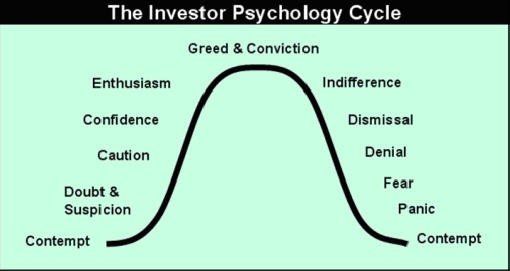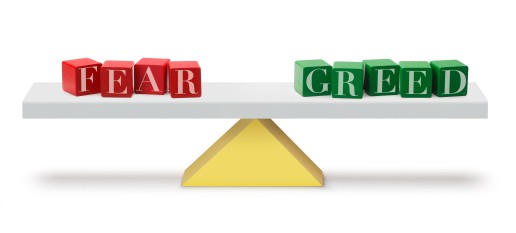Greed—and fear
Post on: 7 Август, 2015 No Comment

Illustration by S. Kambayashi
THE monument to Soviet central planning was supposed to have been a heap of surplus left boots without any right ones to match them. The great bull market of the past quarter century is commemorated by millions of empty houses without anyone to buy them. Gosplan drafted workers into grim factories even if their talents would have been better suited elsewhere. Finance beguiled the bright and ambitious and put them to work in the trading rooms of Wall Street and the City of London. Much of their effort was wasted. You can only guess at what else they might have achieved.
When the financial system fails, everyone suffers. Over the past 22 months the shock has spread from American housing, sector by sector, economy by economy. Some markets have seized up; others are being pounded by volatility. Everywhere good businesses are going bankrupt and jobs are being destroyed. For the first time since 1991 global average income per head is falling. Even as growth in emerging markets has come to a halt, the rich economies look set to shrink. Alan Greenspan, who as chairman of Americas Federal Reserve oversaw the boom, calls the collapse “a once-in-a-half-century, probably once-in-a-century type of event”. Financial markets promised prosperity; instead they have brought hardship.
Financial services are in ruins. Perhaps half of all hedge funds will go out of business. Without government aid, so would many banks. Britain has suffered its first bank-run since Disraeli was prime minister in the 1870s. America has stumbled from one rescue to the next. The Wall Street grandees have been humbled. Hundreds of thousands of people in financial services will lose their jobs; many millions of their clients have lost their savings.
Special report
Related items
For a quarter of a century finance basked in a golden age. Financial globalisation spread capital more widely, markets evolved, businesses were able to finance new ventures and ordinary people had unprecedented access to borrowing and foreign exchange. Modern finance improved countless lives.
But more recently something went awry. Through insurance and saving, financial services are supposed to offer shelter from lifes reverses. Instead, financiers grew rich even as their industry put everyones prosperity in danger. Financial services are supposed to bring together borrowers and savers. But as lending markets have retreated, borrowers have been stranded without credit and savers have seen their pensions and investments melt away. Financial markets are supposed to be a machine for amassing capital and determining who gets to use it and for what. How could they have been so wrong?
Finance is increasingly fragile. Barry Eichengreen of the University of California at Berkeley and Michael Bordo of Rutgers University identify 139 financial crises between 1973 and 1997 (of which 44 took place in high-income countries), compared with a total of only 38 between 1945 and 1971. Crises are twice as common as they were before 1914, the authors conclude.
The paradox is that financial markets can function again only if this lesson is partly forgotten. Financial transactions are a series of promises. You hand your money to a bank, which promises to pay it back when you ask; you invest in a company, which promises you a share of its future profits. Money itself is just a collective agreement that a piece of paper can always be exchanged for goods or services.
Imagine, for a second, how finance began, with small loans within families and between trusted friends. As the circle of lenders and borrowers grew, financial transactions were able to muster larger sums and to spread risk, even as promises became harder to enforce. Paul Seabright, an economist at the University of Toulouse in France, observes that trust in a modern economy has evolved to the miraculous point where people give complete strangers sums of money they would not dream of entrusting to their next-door neighbours. From that a further miracle follows, for trust is what raises the billions of dollars that fund modern industry.
Trusts slow accumulation pushes financial markets forward; its shattering betrayal batters them back. Sometimes this is through bad faith, as when Bernie Madoff, a grand fund manager, allegedly made his investors $50 billion poorer, or mortgage-sellers tempted naive borrowers. But promises made in good faith can be broken too. Indeed, honest failure is even more corrosive of trust than outright criminality. Everyone understands that now.
The failure of finance will affect ideology, too. Many people find capitalisms central planner hard to put up with at the best of times. Free markets shun seemingly worthy causes, whereas the frivolous or apparently undeserving are rewarded. Look at the financial-services industry itself. In America middle-class pay has stalled in recent years but financiers have figured prominently among the tiny number of people who have captured much of the extra income. For as long as the world economy was growing fast, financial markets commanded grudging allegiance. Yet the same financiers who preached the necessity of free markets on the way up have since depended on taxpayers to save their industry at a cost of trillions of dollars.
Financiers will find the arguments for free markets harder to make now that they have lost the benefit of the doubt. Charles Kindlebergers classic study, “Manias, Panics and Crashes: A History of Financial Crises”, updated by Robert Aliber in 2005, suggests that financial instability feeds on itself. Japanese savings fled their own bust and sloshed first into the Nordic countries and then into Asia, which suffered contagion in 1997.
Some see todays disaster as a result of that Asian crash. Asian nations—especially China—have been determined to be part of global capital markets but not to run current-account deficits which would leave them vulnerable to sudden currency outflows. So they have been happy to see their money go abroad. In the phrase of Martin Wolf, an economic columnist at the Financial Times. they “smoke but do not inhale”.

In 2006 Americas current-account deficit peaked at 6% of its GDP (see chart 1). Between 2000 and 2008 the country received over $5.7 trillion from abroad to invest, equivalent to over 40% of its 2007 GDP. Over the same period Britain and Ireland absorbed around a fifth of their 2007 GDPs and Spain a vast 50%. The financial system had the job of recycling the money to borrowers. Inevitably, credit became cheaper and savings declined. In America savings fell from around 10% of disposable income in the 1970s to 1% after 2005.
Not everyone agrees about the cause of this torrent of foreign capital. Although some blame Asian saving, others point to Western extravagance. But there is little doubt about the consequences. All four of the debtor countries in the chart enjoyed housing booms. Jeffry Frieden, a political economist at Harvard University, says about three-quarters of credit booms financed from abroad end up in crashes.
And yet financial services were not so much a victim of the inflows of foreign capital as an eager accomplice. The question is why financial systems are so liable to turn foreign credit into ruinous busts. In particular, why did America, home to the worlds most advanced financial system, turn foreign credit into the worlds most serious post-war bust?
The suspicion is that American know-how and talent made the disaster worse. Of all the financial instruments to have failed, newfangled collateralised-debt obligations (CDOs) have turned out to be among the most devastating. One way of thinking about CDOs, says Raghuram Rajan, a professor at the University of Chicago, is as a mechanism for converting mortgage securities and corporate bonds from huge, illiquid assets owned by local investors into liquid financial instruments that could be flogged across the world. Philip Lane, of Trinity College Dublin, thinks that sophisticated American financial services combined dangerously with relatively unsophisticated financial services elsewhere.
If the price of sophistication is instability, something is wrong. You might conclude that the thing to do is to shackle finance as it was shackled in the 1950s and 60s. If ever there were a moment for this, it would be now. It takes a big upheaval to open the way for radical reform. The structure of financial regulation in America still bears the mark of ideas forged in the Depression.
Reform is certainly needed, yet, for all the excesses and instability of finance, a complete clampdown would be a mistake. For one thing, remember the remarkable prosperity of the past 25 years. Finance deserves some of the credit for that. Note, too, that finance has always been plagued by crises, whether the system is open or closed, simple or sophisticated. Attempts to regulate finance to make it safe often lead to dangerous distortions as clever financiers work around the rules. If there were a simple way to prevent crises altogether, it would already be the foundation stone of financial regulation.
In fact, the aim should be neither to banish finance nor to punish it, but to create a system that supports economic growth through the best mix of state-imposed stability and private initiative. Modern finance is flawed, unstable and prone to excess. But think of those boots and those wasted lives: planned markets are flawed, unstable and excessive too.














